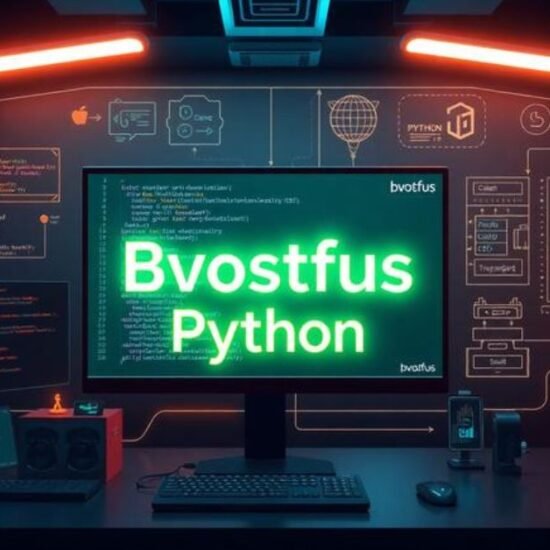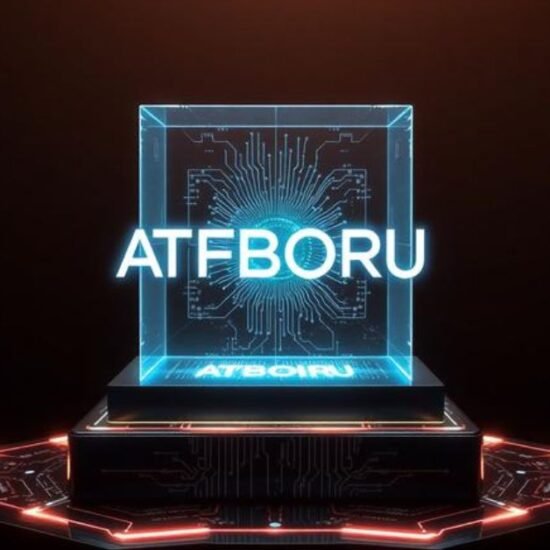Introduction
In the fast-changing digital environment, interoperability, agility, and scalability are not only desirable but also very necessary. Service-Oriented Architecture (SOA) is in focus, and with SOA OS23, we are entering the realm of digital systems integration, cloud-native approaches, and enterprise modernization.
It is not any ordinary upgrade of the system, but it is the model of the following operating standard in the world of service coordination and modular application structures. It integrates the traditional SOA principles with the new ones, such as container orchestration, microservice management, API-first design, and enhanced security layers. As a developer, system architect, or enterprise digital strategist, the knowledge of SOA OS23 will provide you with the advantage of providing flexible, future-proof applications.
This detailed paper will deconstruct what it is, its operation, why it is superior to its predecessors, its practical uses, and why this release is particularly significant in 2024 and beyond. The guide is your all-in-one shop to control SOA OS23 and remain in the digital game.
What Is SOA OS23? An Introduction to the Framework
SOA OS23 is an abbreviation of Service-Oriented Architecture Operating System 2023, the latest release of SOA-based architectural systems applied to support scalable and distributed loosely coupled services within enterprise software.
Key Highlights of SOA OS23:
- constructed based on service-oriented design.
- Enables cloud-native implementation and containerization.
- Improved API cross-platform compatibility.
- And a combined zero-trust security model.
- Plug-and-play services that are modular in nature.
Why It Matters:
- Monolithic infrastructure is restrictive to agility.
- Companies require scalable systems that are flexible.
- It is bringing in modern capabilities of standardization.
Core Components of SOA OS23 Explained
The basics of SOA OS23 begin with the study of its architecture. It consists of various modular and interoperable parts.
Main Components:
- Registry/Repository of Services.
- Store of discovered available services.
- Service Bus (ESB)
- Manages service-to-service communication.
- Orchestration Layer
- Manages interactions and workflows of controls.
- Security Manager
- Adopts the zero-trust model and encryption.
- API Gateway
- Access point to third-party and external APIs.
- Monitoring & Logging Tools
- In-built observability system (Prometheus/Grafana compatible)
The advantages of this architecture include:
- Minimizes the development time.
- Ensures interoperability
- Services that are dynamically deployable.
- Allows access and authentication on a role basis.
Bullet Highlights:
- Out-of-the-box event-based support.
- RESTful and open API interface.
- Policy-based execution and built-in policies.
SOA OS23 vs Traditional SOA: Key Differences
Although it is SOA-based, It applies significant enhancement to the cloud-native, API-first age.
Comparison Table:
| Feature | Traditional SOA | SOA OS23 |
| Communication Style | SOAP | REST, gRPC, JSON |
| Deployment | On-premise | Cloud-native |
| Scalability | Limited | Horizontal & dynamic |
| API Support | WSDL | OpenAPI / GraphQL |
| Security Model | Firewall-based | Zero-Trust, API-first |
| Monitoring Tools | External only | Built-in observability |
| DevOps Compatibility | Low | Built for CI/CD |
Real-World Upgrade Scenarios:
- Healthcare systems were also upgraded to SOA in order to allow faster patient APIs.
- OS23 was used by the banks to make internal services available through standardized microservices.
Features That Make SOA OS23 a Game-Changer
SOA OS23 is not adjusted to the current requirements but establishes new standards.
Top Standout Features:
- Cloud-native Ready: AWS, Azure, GCP.
- Event-Driven Architecture (EDA): Kafka Supporter, RabbitMQ.
- Auto-healing Infrastructure: Services will be restored or redistributed intelligently.
- AI/ML-based Analytics: Online optimization recommendation systems.
- Knative Support: Serverless support.
Developer-Centric Features:
- Stub stub auto-code generators.
- Throttling and rate limiting in API.
- Live sandbox environments
- Role-based access logs and audit logs.
For Enterprise Needs:
- ETSI (telecom standards) compliant.
- ISO 27001 alignment
- HIPAA/GDPR logging and exporting.
Use Cases and Industries Leveraging SOA OS23
Industries Using SOA OS23:
| Industry | Use Case Example |
| Healthcare | Patient portals, EMR APIs, billing microservices |
| Banking | Account info APIs, digital KYC, dynamic workflows |
| Retail | Inventory sync, real-time promotions, omnichannel |
| Telecom | Subscriber service orchestration, QoS monitoring |
| Logistics | Parcel tracking microservices, GPS event-driven updates |
Benefits Observed:
- Operational Agility
- Increased Velocity of Developers.
- Customer Satisfaction through Faster Updates.
- Scalable Load Management in High Traffic API.
Case Study Example:
- The use of legacy middleware was replaced with SOA in a logistics company, leading to 86 superficial downtimes during Black Friday and a 3.7-fold throughput.
How SOA OS23 Supports DevOps & Agile Teams
The modern world requires speedy delivery and constant integration, as well as scalability without interruption.
DevOps Compatibility:
- Pipelines in Jenkins/ArgoCD through continuous delivery.
- Natural packaging of Docker and Helm charts.
- Container tags versioning services.
- Canary testing that is a part of routing logic.
Agile-Friendly Features:
- Microservices are modularized; teams are independent in their deployment.
- Live tracking and the usage statistics.
- secret managers Cloud-native config maps.
Dev Toolkit Integrations:
- Visual Studio Code plugins
- GitHub Actions has been supported (and GitLab CI/CD).
- Native YAML Kubconfigs.
SOA OS23 Security Architecture
This release has security as an essential element of the release, which corresponds with the current standards and enterprise-level policies.
Core Security Features:
- Zero Trust Network Model
- OpenID Connect and OAuth 2.0.
- IP Whitelisting and API Rate Limiting.
- Mutual TLS Authentication (mTLS)
- Encrypted Service Registry
Additional Tools:
- Audit trails
- Dashboards on security logging.
- Automated updates in the form of patches that are implemented every week.
Compliance Ready:
- GDPR
- HIPAA
- SOC 2
- ISO/IEC 27001
This security design will provide protection of end-user data and governance of enterprise API.
Tools and Platforms Compatible with SOA OS23
SOA OS23 is ecosystem compatible whether on-premise or in hybrid and full-cloud environments.
Supported Platforms:
| Platform / Tool | Compatibility Notes |
| Kubernetes | Native support with YAML & Helm Charts |
| Docker | Container-native base services |
| Kafka | For EDA (event-driven architecture) |
| API Gateway (Kong) | Reverse proxy for pub/sub and REST |
| Terraform | For provisioning infrastructure |
Other Compatible Tools:
- Istio (service mesh)
- Prometheus & Grafana (Monitoring)
- Secret management (HashiCorp Vault)
- ELK/EFK Stack (Logging)
Migration: Moving to SOA OS23 from Legacy Systems
Migration may sound like an intimidating experience, and SOA OS23 has several tools that make the experience less stressful.
Migration Essentials:
- Transfer Generators API Stub Generators: Automate the replacement of older service calls.
- Retro-wrapper Adapters: Backward-compatible interfaces.
- Data Bridge Services: to synchronize databases across systems.
- Service Mesh Config Maps: Help route traffic in time of update.
Migration Roadmap:
- Determine the legacy system and dependencies of the audit.
- Containerize existing apps
- Deploy backwardly, supporting incrementally.
- Track and eliminate obsolescent code.
Success Metrics:
| Metric | Before SOA OS23 | After Migration |
| Average Downtime | 3.2 hours/month | 15 mins/month |
| Deployment Speed | 1/week | 3/day |
| REST Service Failures | 17% | < 1% |
Future of SOA OS23 & What’s Next
SOA OS23 paves the way to the future of service architecture and distributed computing.
What’s Coming:
- SOA OS24 that includes in-built AI service routing.
- Components Ready for Edge Computing.
- Quickened cold service start-up.
- Web Assembly (Wasm runtime) Support.
Predictions:
- SOA will have even more fusion with serverless and edge-native applications.
- Increased importance of AI observability tools.
- Emergency AI-created microservices.
SOA OS23 makes sure that you are prepared to make this transition, reduces the tech debt in the present, and future-proofs your stack.
FAQs
Is it SOA OS23-open or licensed?
It depends on the build. It has open-core versions, with enterprise licenses being used on premium modules.
Can I deploy SOA OS23 on-premise?
Yes, but the best suitability is in the hybrid or cloud deployments.
Does SOA OS23 support Kubernetes?
Yes, it is built natively on K8s, and it has support for Helm charts.
What are the languages that SOA OS23 supports?
Polyglot supports Java, Node.js, Python, Go, and .NET Core.
Does SOA OS23 fit startups?
Yes, mainly when scalability, modularity, and quick release cycles are critical.
Conclusion
SOA OS23 is a great revolution in current service design. It offers a unified, developer-friendly system that includes scalability, modularity, API-preparedness, and cloud-native functionality that will be adored by modern enterprises and scaling startups.
With simple connectivity with Kubernetes to the functional DevOps and security facility, SOA OS23 can be used to not only substitute your current systems but also change the way your digital architecture operates. A fresh start or a migration: SOA OS23 is flexible, fast, and secure, which is what you need in any competitive technical environment. Then are you now ready to build smarter, scale faster, and deploy with confidence? SOA OS23 may simply be your new platform.
Visit the rest of the site for more interesting and useful articles.




